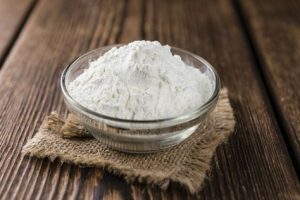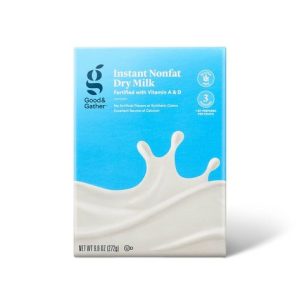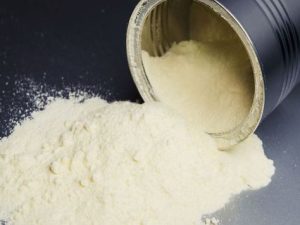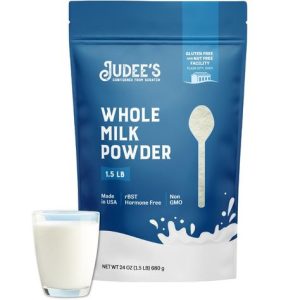Dry milk powder is a shelf-stable pantry staple that adds a surprising versatility to baking. It’s not just for emergency preparedness or quick breakfasts anymore! Bakers are discovering the unique benefits of dry milk powder in their creations.
This article will explore the wonders of dry milk powder in baking. We’ll cover the different types, substitution tips, and even include some delicious dry milk powder recipe ideas to get you started!
What is Dry Milk Powder?
Dry milk powder is simply milk that has had most of the water removed. This dehydration process creates a fine powder with a long shelf life. Dry milk powder can be made from whole milk, skim milk, or even buttermilk.There are two main types of dry milk powder to consider for baking:
Instant Dry Milk Powder:
This type dissolves easily in liquids, making it a convenient choice for baking.
Non-instant Dry Milk Powder:
Why Bake with Dry Milk Powder?
So, why trade in some of your fresh milk for dry milk powder? Here are a few reasons:
-
Extended Shelf Life: Dry milk powder has a long shelf life, unlike fresh milk. This is a great benefit for those who don’t go through milk quickly or want to have baking ingredients on hand.
-
Enhanced Flavor: Dry milk powder can add a richer, creamier flavor to baked goods.
-
Improved Texture: Dry milk powder can help baked goods achieve a more tender and moist crumb.
-
Fortified with Vitamins: Some dry milk powders are fortified with vitamins and minerals, adding a slight nutritional boost.
-
Budget-Friendly: Dry milk powder is generally less expensive than fresh milk.
However, it’s important to remember that dry milk powder is not a perfect substitute for fresh milk in every recipe. Dry milk powder can affect the taste and texture of your baked goods, so be prepared to experiment and find what works best for you.
Baking with Dry Milk Powder: Substitutions and Tips
Dry milk powder isn’t a one-to-one substitute for milk. Here are some key things to keep in mind:
-
Start Small: Don’t try to replace all the milk in your recipe with dry milk powder at once. Begin by substituting a quarter or a third of the milk with dry milk powder.
-
Rehydrate for Best Results: For best results, rehydrate the dry milk powder before using it in your recipe. Mix the powder with warm water according to the package instructions.
-
Adjust Liquids: Since dry milk powder adds dry ingredients, you might need to adjust the amount of other wet ingredients in your recipe, like water or eggs.
-
Consider the Flavor: Whole milk powder adds a richer flavor than skim milk powder. Choose the type that best complements your recipe.
Dry Milk Powder Recipe Inspiration
Ready to put your dry milk powder baking skills to the test? Here are a few recipe ideas to get you started:
-
Creamy Buttermilk Pancakes: Dry milk powder can be used to make buttermilk substitutes, perfect for fluffy pancakes.
-
Golden Dinner Rolls: Add a touch of richness to your dinner rolls with dry milk powder.
-
Luscious Lemon Bars: Dry milk powder can enhance the creamy texture of lemon bar filling.
-
Delectable Chocolate Chip Cookies: Dry milk powder can add a subtle depth of flavor to your favorite cookie recipe.
These are just a few ideas to get you started. With a little creativity, you can incorporate dry milk powder into all sorts of baked goods.
Remember, baking with dry milk powder is all about experimentation. Don’t be afraid to adjust recipes and find what works best for you!
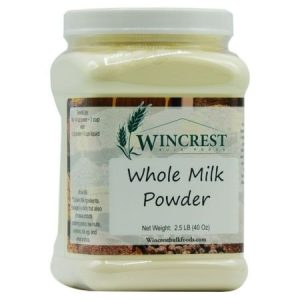
Beyond the Basics: Exploring Dry Milk Powder in Baking
We’ve covered the essential reasons to bake with dry milk powder. Now, let’s delve deeper into some unique applications and explore its potential to elevate your baking!
Beyond Shelf Life: While the long shelf life is a major perk, dry milk powder offers more than just pantry convenience. Here are some exciting ways to incorporate it into your baking repertoire:
-
Intensify Flavor: Dry milk powder, particularly whole milk powder, adds richness and depth of flavor to baked goods. It can enhance the taste of breads, cookies, and even cakes.
-
Boost Texture: Dry milk powder can contribute to a more tender and moist crumb. This is especially helpful in recipes that call for buttermilk, as dry milk powder can mimic its textural effects.
-
Stabilize Whipped Cream: A small amount of dry milk powder can help stabilize whipped cream, making it more resistant to falling flat.
-
Add a Hint of Maillard Reaction: When used in cookies or breads, dry milk powder can contribute to a browning effect during baking. This can create a more visually appealing golden brown color on your baked goods.
Creative Applications for Dry Milk Powder
Feeling adventurous in the kitchen? Here are some creative ways to use dry milk powder:
-
Homemade Yogurt: Believe it or not, you can use dry milk powder to make your own yogurt! There are many recipes available online that utilize dry milk powder as a base.
-
Pan-Fried Delights: Coating foods like chicken or fish in a mixture of dry milk powder and spices before pan-frying can add a crispy and flavorful crust.
-
Savory Sauces and Soups: A touch of dry milk powder can add a subtle creaminess to savory sauces and soups.
Remember: Experimentation is Key
The beauty of baking with dry milk powder lies in its versatility. Don’t be afraid to experiment and discover how it interacts with different flavors and ingredients in your recipes.
Here are some additional tips for success:
- Start with small substitutions. Introduce dry milk powder gradually, replacing a portion of the liquid milk in your recipe.
- Consider the type of dry milk powder. Whole milk powder adds more richness, while skim milk powder is a lighter option.
- Keep in mind the rehydration process. If using non-instant dry milk powder, whisk it with warm water to create a slurry before adding it to your recipe.
With a little practice, dry milk powder can become a valuable tool in your baking arsenal. So next time you’re looking to add a touch of richness, enhance texture, or simply explore new baking techniques, reach for the dry milk powder and get creative!

